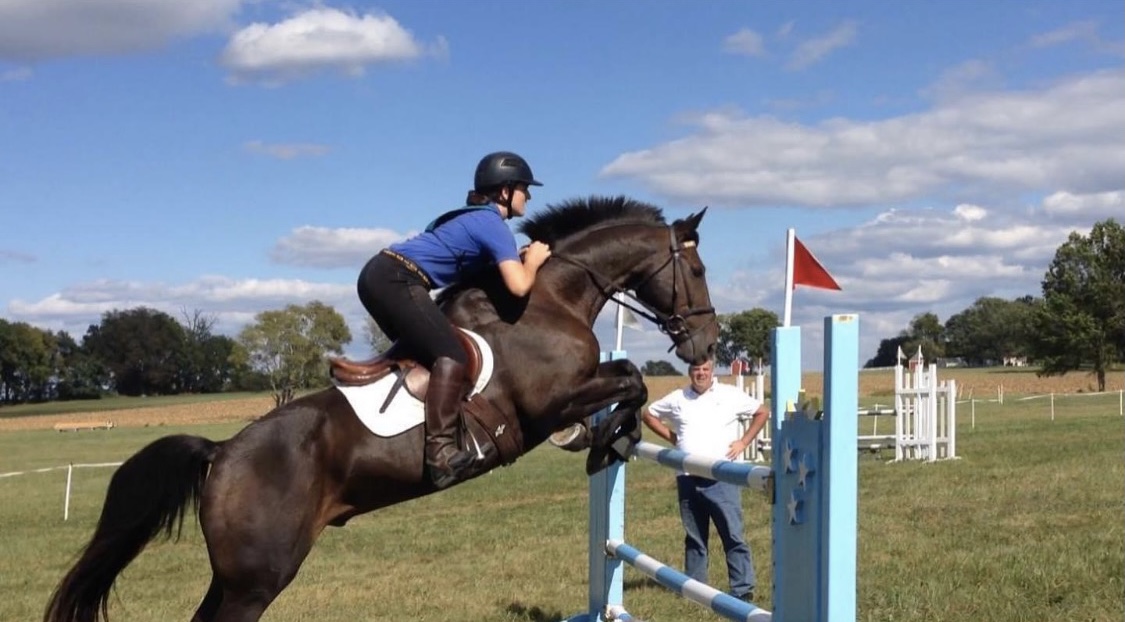“You mistake your knowledge of what happens for an understanding of why it happens, and you mistake your feeling of familiarity for genuine knowledge.”
-Christopher Chabris and Daniel Simons
In my last article, I wrote about the Socratic Method—a teaching method where the teacher leads the student to the correct answer through a series of questions. I discussed the pros and cons of the approach as applied to our sport. As to the question of whether it’s a good method to use when training horses and riders, my final answer was basically “it depends.”
I’m fascinated by the ways people and horses learn. As someone who has found my home and joy in school, I have only recently realized that it is by pure coincidence that the teaching methods used at most of the schools I have attended match up with the way that I learn. But people learn in lots of different ways: by watching, by doing, by listening, by feeling, by emulating. Learning how you learn is perhaps one of the most important things to learn about yourself.
But then there’s the problem of thinking we understand something when we may actually not understand it. Most of us have probably had the experience of studying for a test, believing we are prepared, and then taking the test and realizing that we can’t answer a lot of the questions because we don’t understand the underlying concepts on a deep level. It’s that deer-in-the-headlights feeling that nobody enjoys. It’s similar to forgetting a dressage test you thought you had down-pat. Christopher Chabris and Daniel Simons describe this problem brilliantly in their 2009 book:
“Because of our extensive experience and familiarity with ordinary machines and tools, we often think we have a deep understanding of how they work. Think about each of the following objects and then judge your knowledge of it on the same 1 to 7 scale: a car speedometer, a zipper, a piano key, a toilet, a cylinder lock, a helicopter, and a sewing machine. Now try one more task: Pick the object that you gave the highest rating, the one you feel you best understand, and try to explain how it works. Give the kind of explanation you would give to a persistently inquisitive child—try to generate a detailed step-by-step description of how it works, and explain why it works.”
-The Invisible Gorilla: How Our Intuitions Deceive Us (from the chapter entitled “Virtue of Being Like an Annoying Child,”)
I think it’s interesting to actually try doing what’s described in the above example. Personally, I chose a zipper as my example. It seemed simple enough; I’ve zipped lots of zippers before, and zipping zippers doesn’t seem all that complicated. But then I tried to explain to someone how they actually work, and I truly had no idea where to start. How do the teeth push together? How do they stay locked in place after the zipper has passed by? What mechanism is used to actually lock them in place? I could only hypothesize about these questions, and I definitely wasn’t confident in my answers.
I like the passage from the Invisible Gorilla book because it reminds us that to truly understand something, we have to be “persistently inquisitive,” even to the point of being annoying. This means that we can’t say something is so “just because it is.” There has to be a reason, and a reason for that reason, and perhaps even a reason for that reason, too. This is the virtue of being like an annoying child.
There has to be a reason why a zipper stays zipped, just like there has to be a reason that it is mechanically harder for your horse to canter on the left lead than the right lead. Just like there has to be a reason why leg yielding is easier in one direction for you. Just like there has to be a reason for just about everything we do.
The mechanics matter. And it matters for coaches and riders to be able to understand the mechanics, because unless you can understand them, you cannot teach them. If an annoying child asked you, “what’s a shoulder-in?”, could you explain, step-by-step, how it works? To do so, we have to be more than familiar with the concepts. We have to genuinely know how and why they work. And it can take a lifetime to achieve that.




















